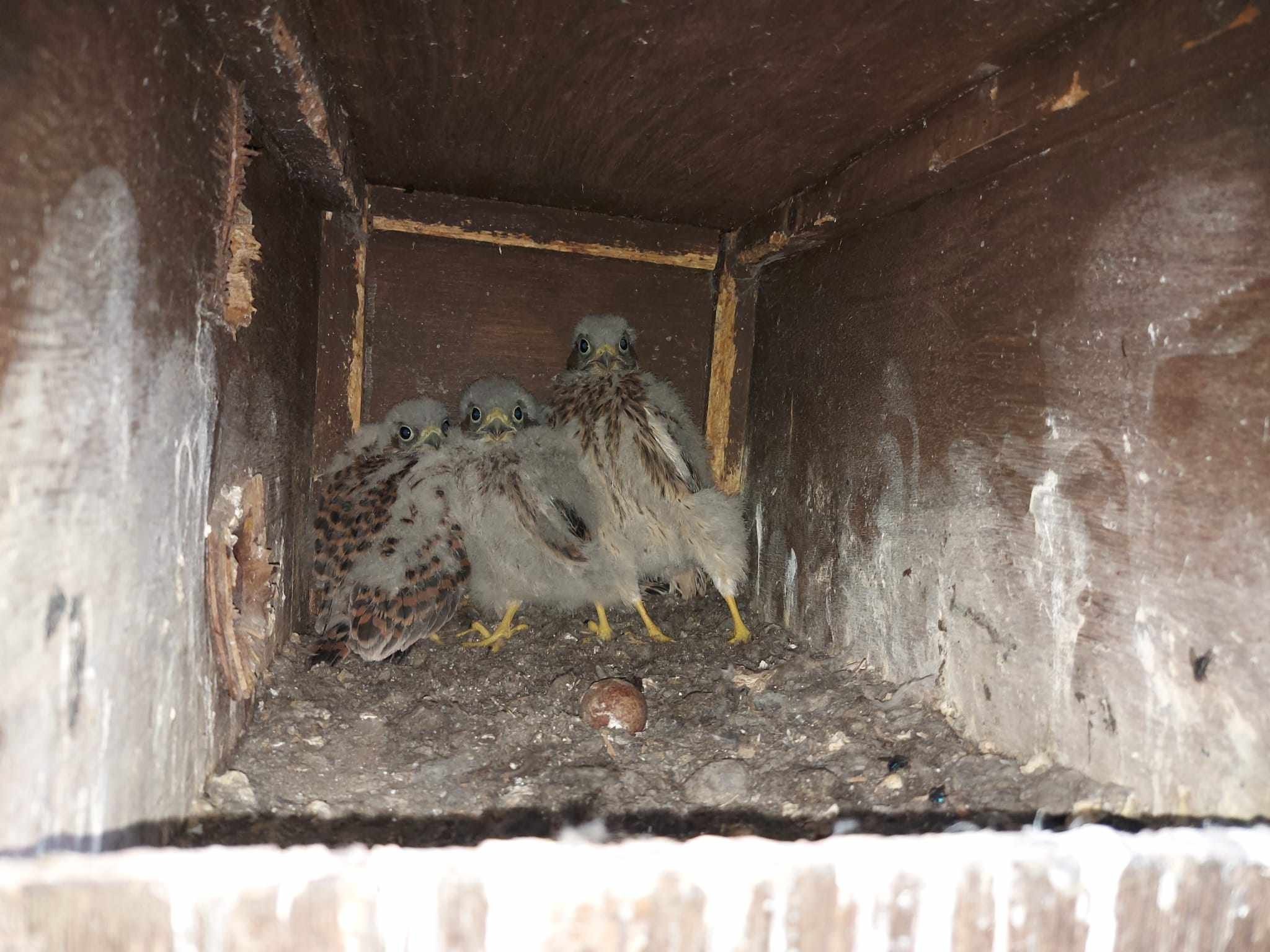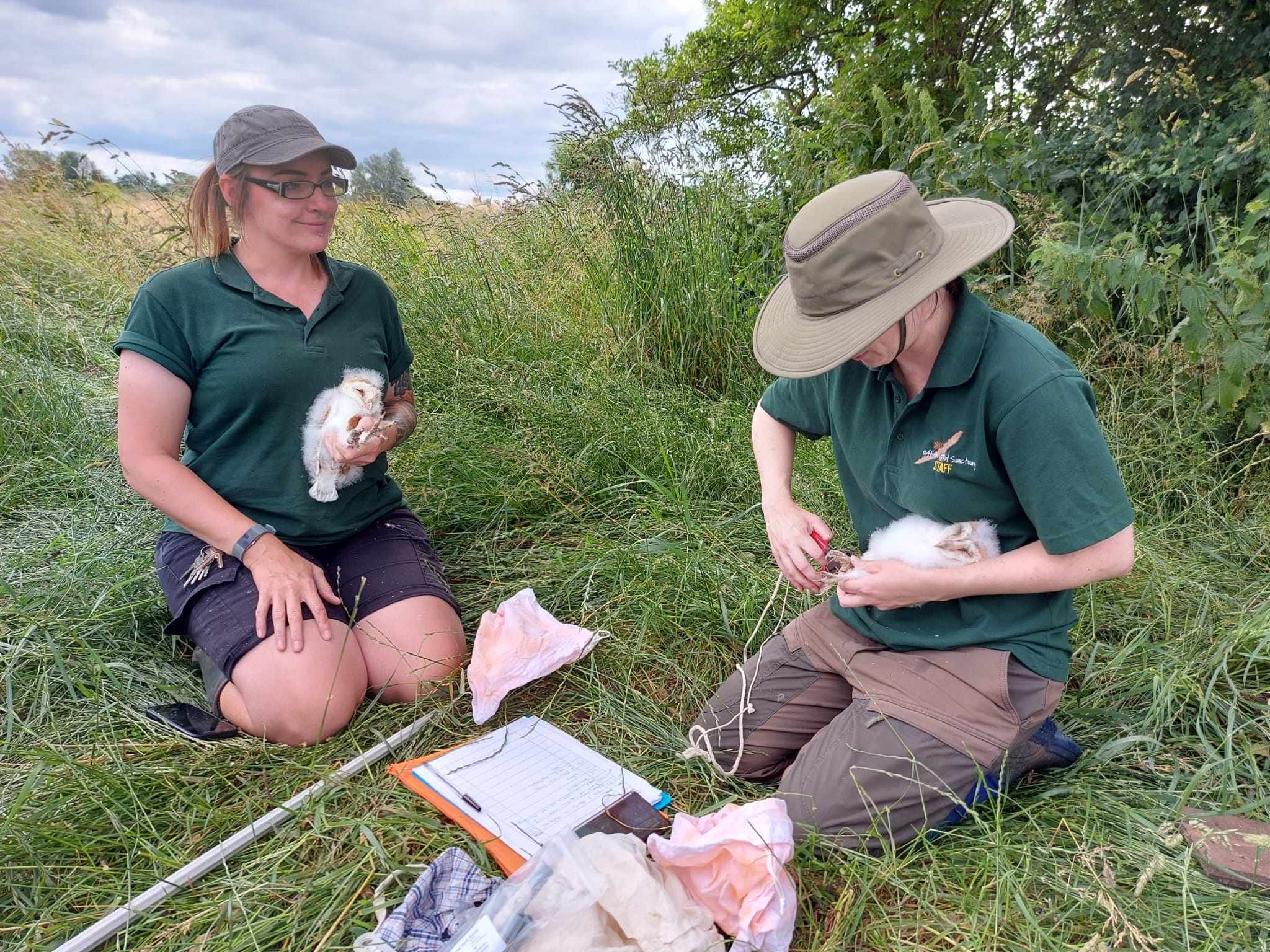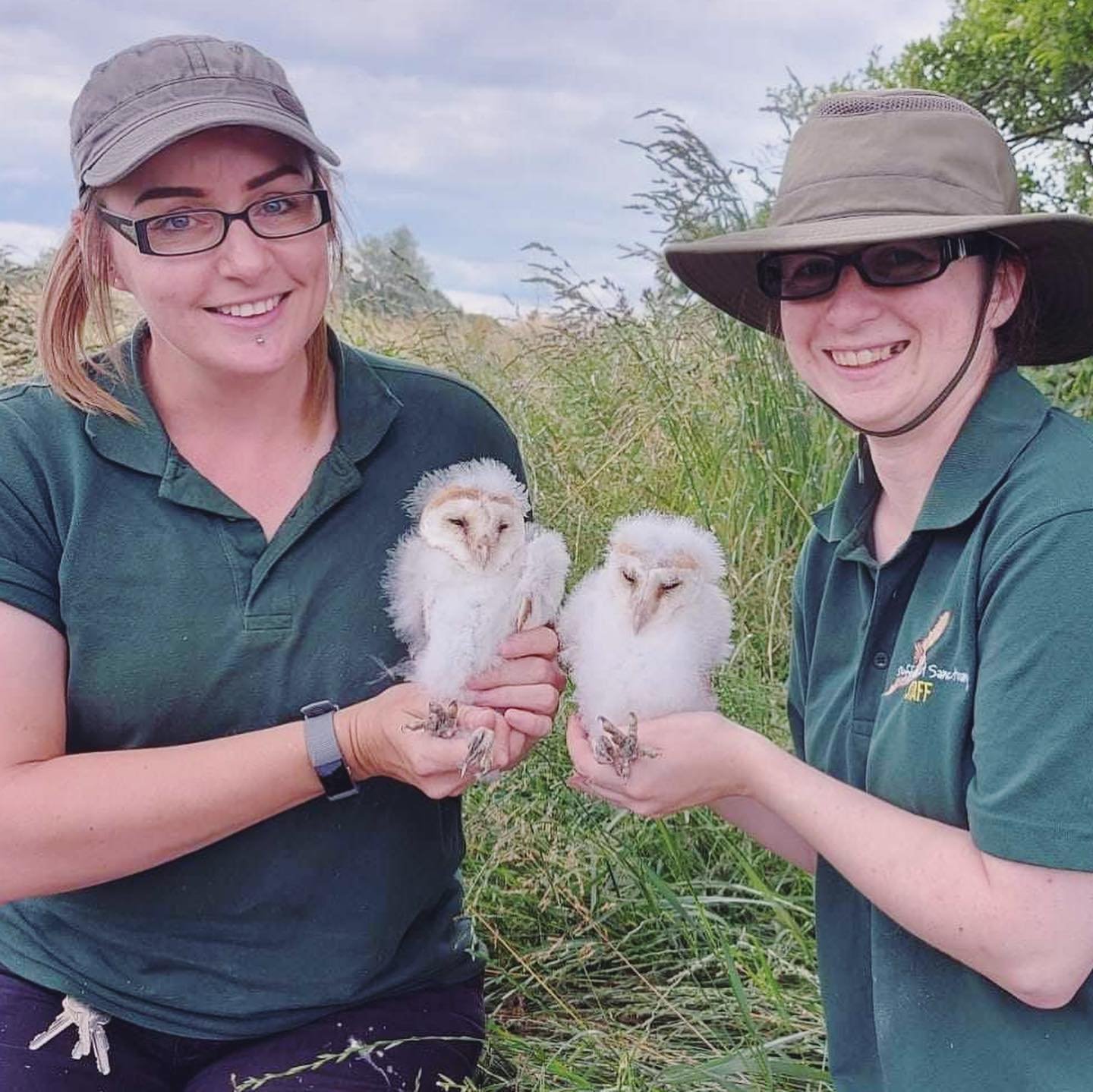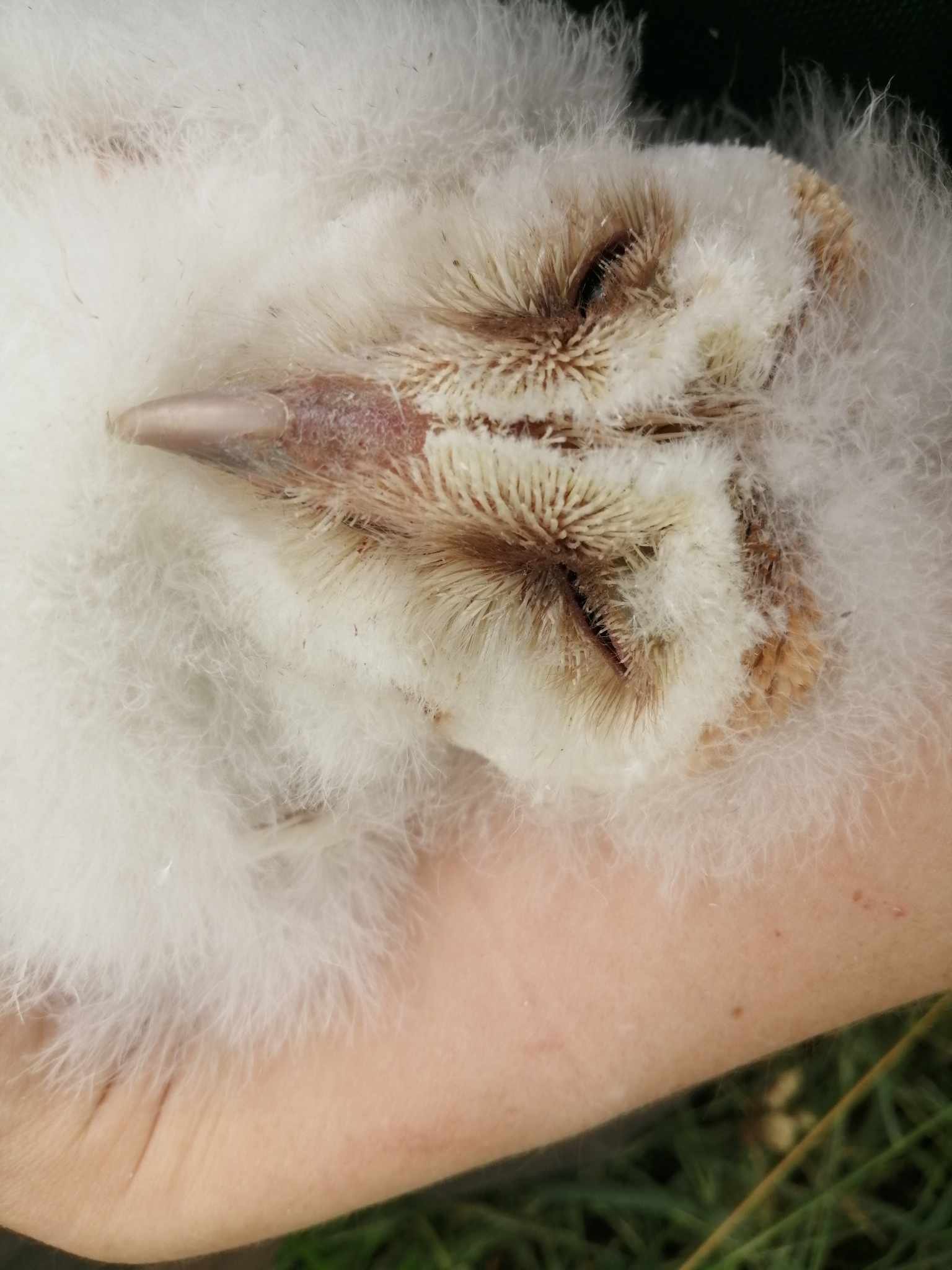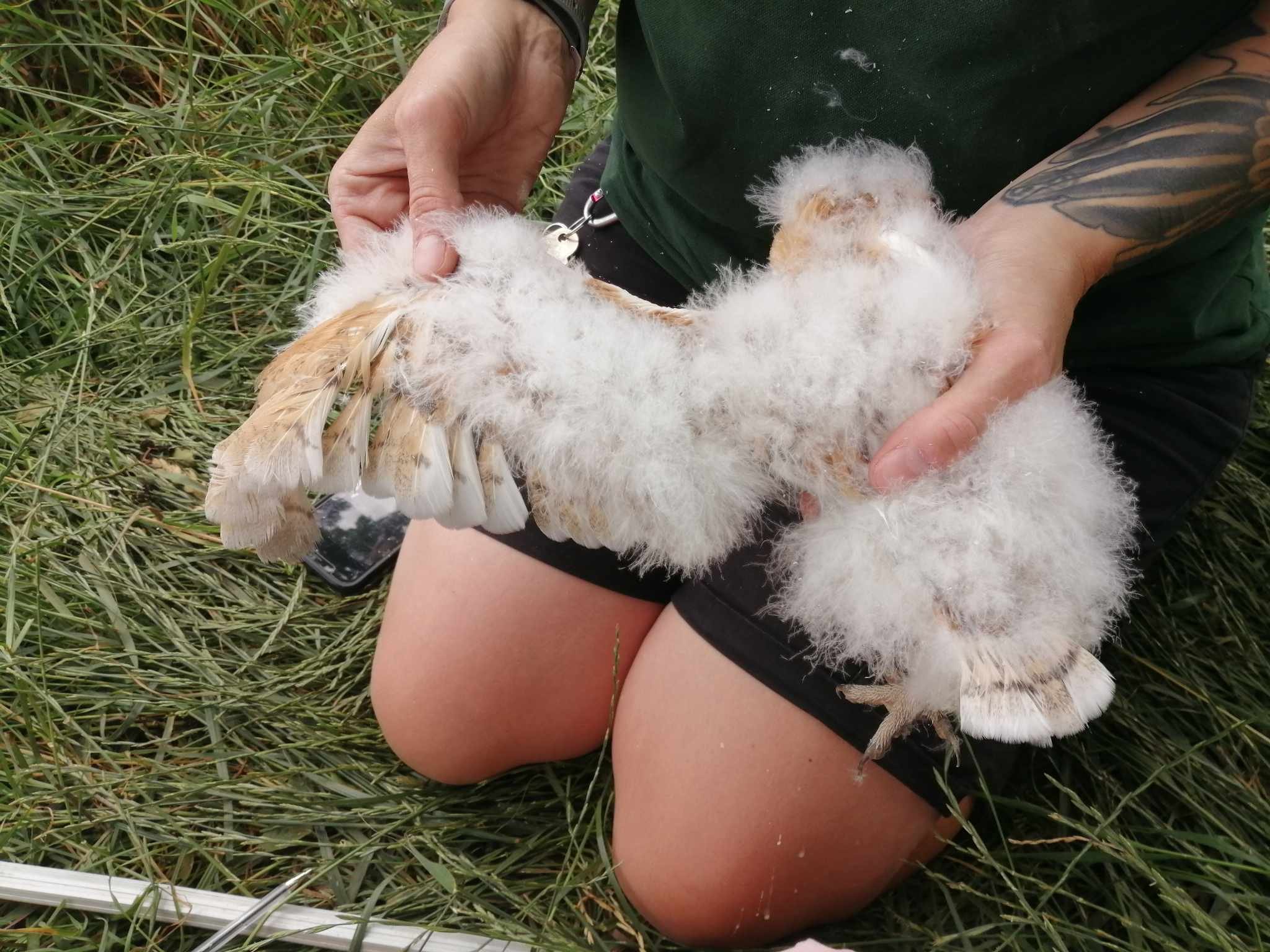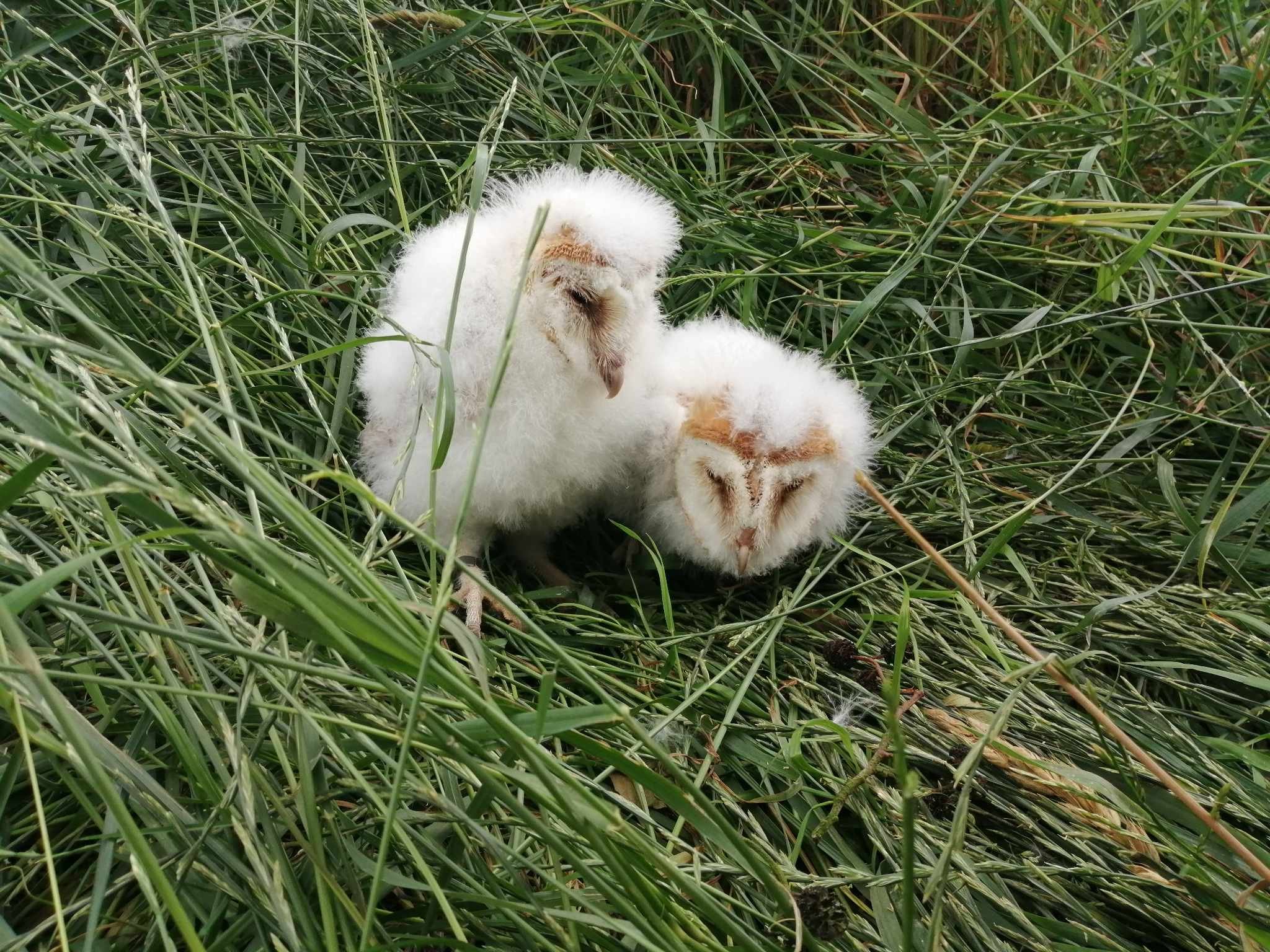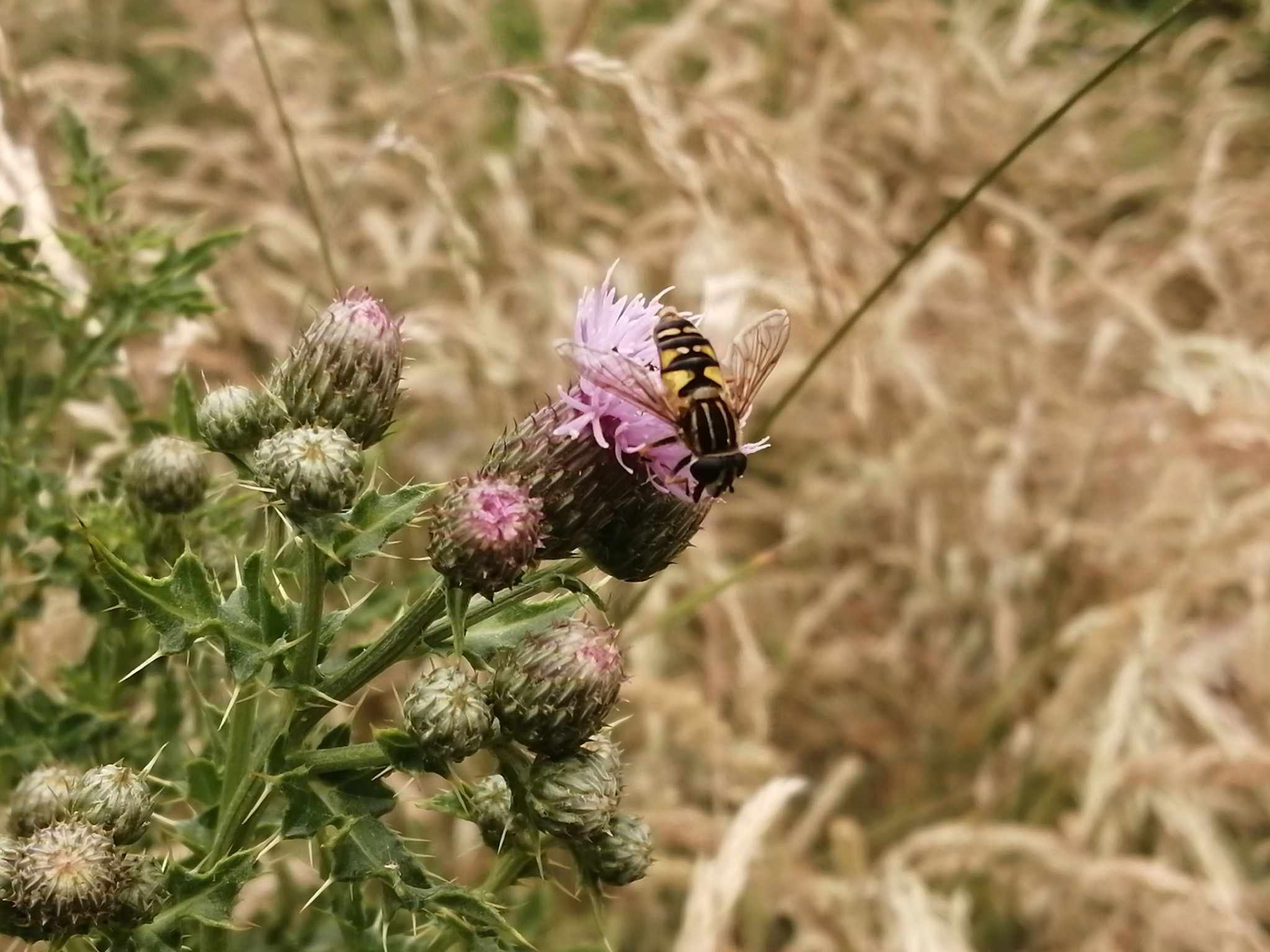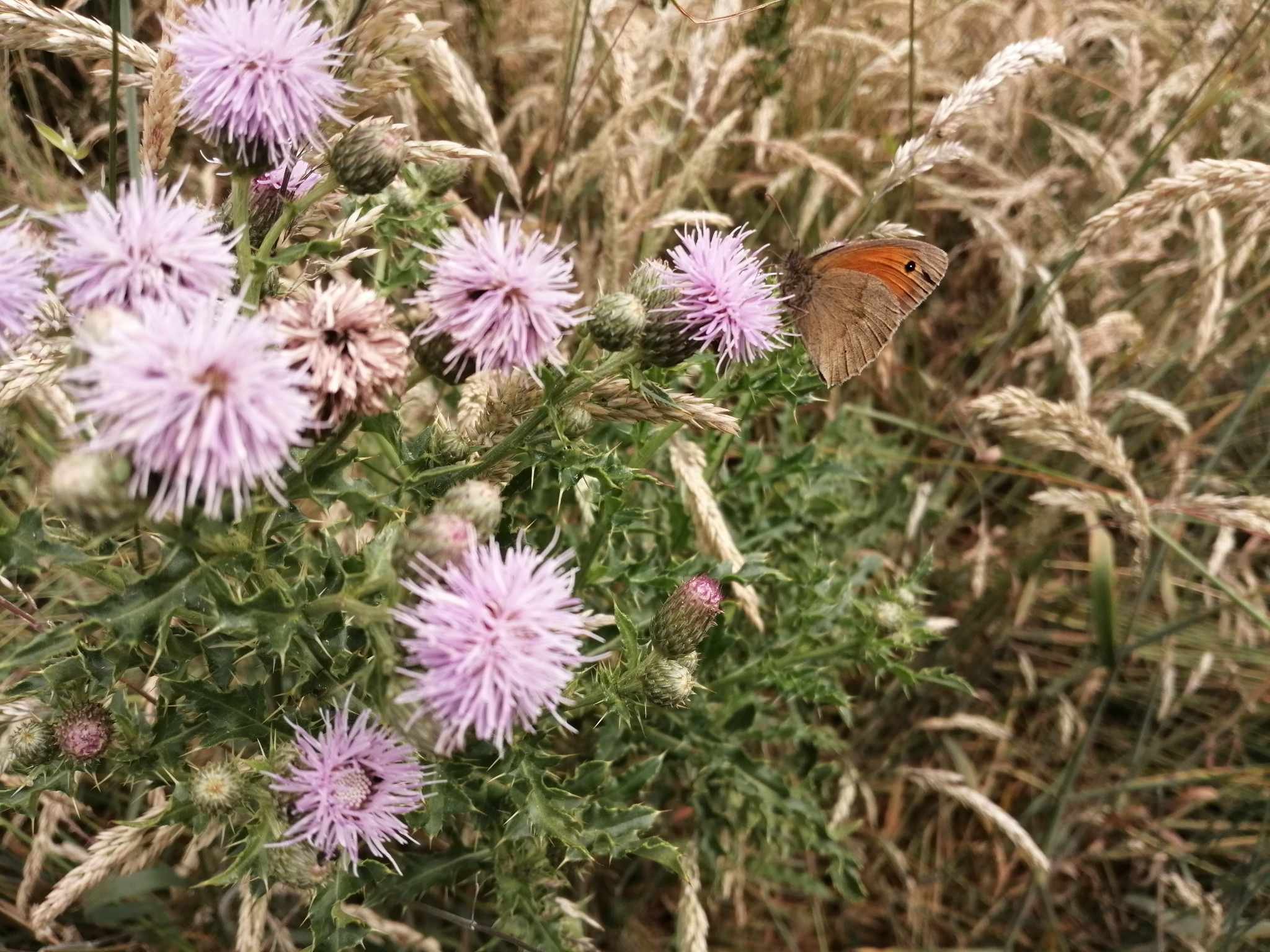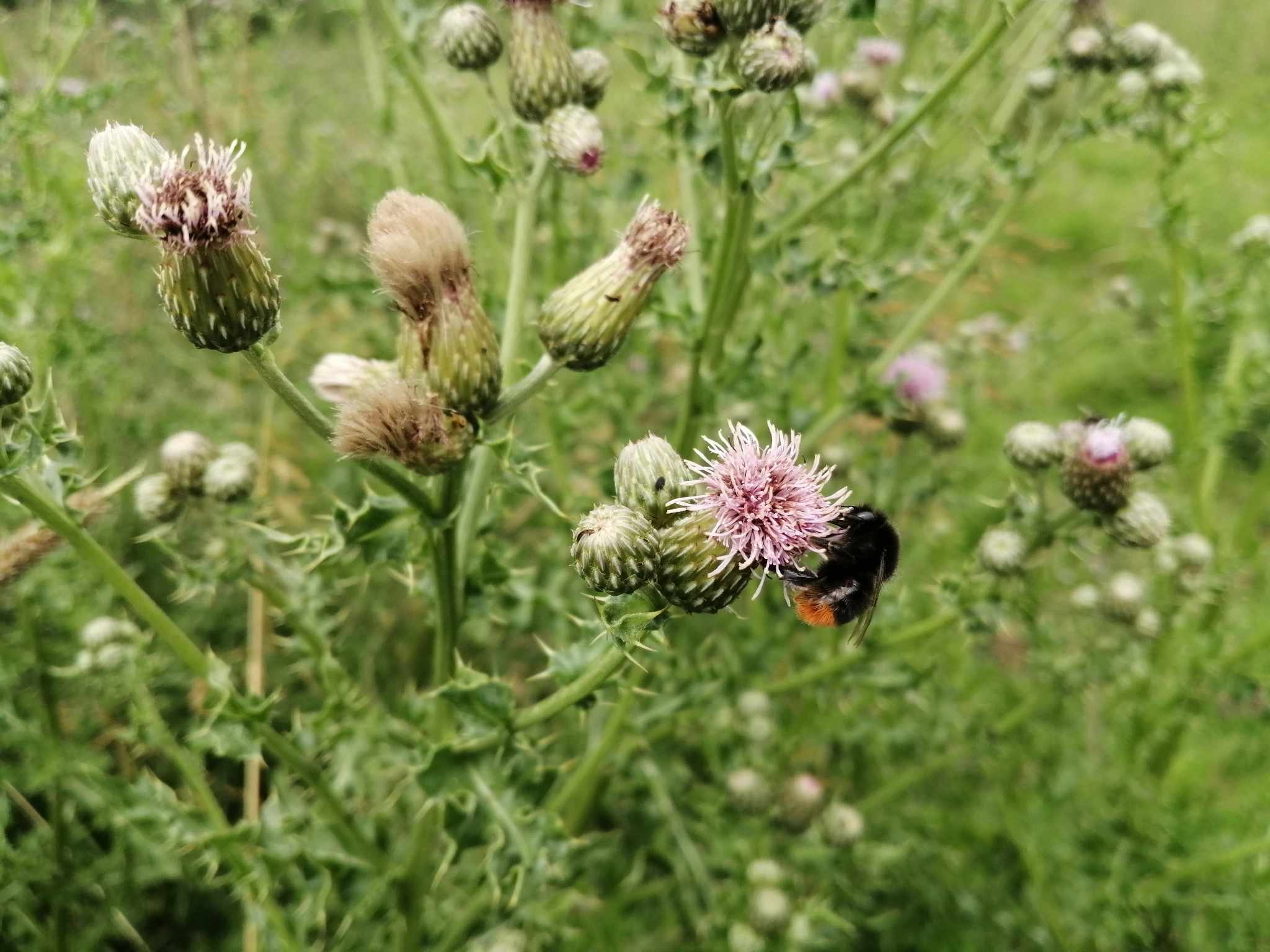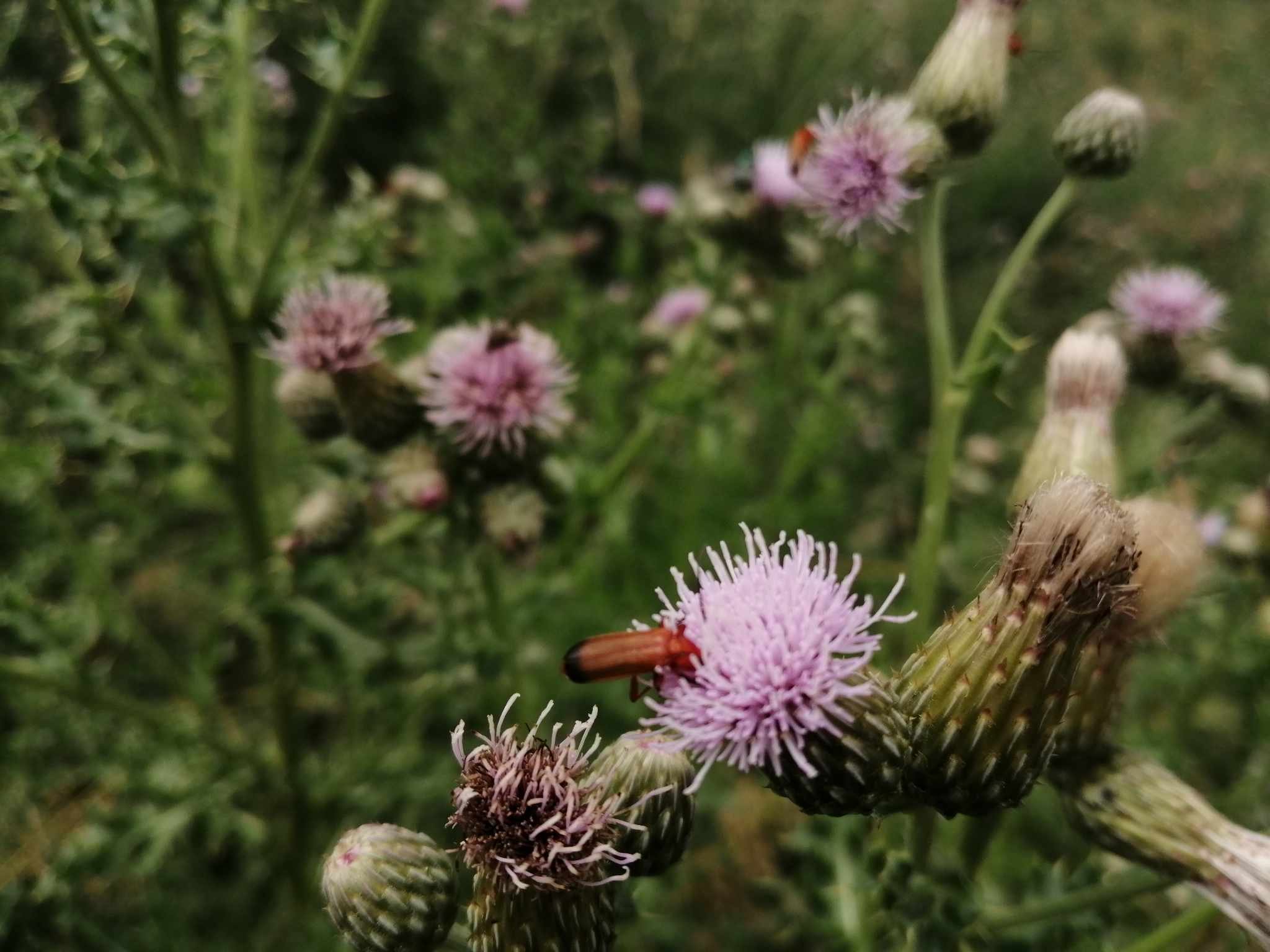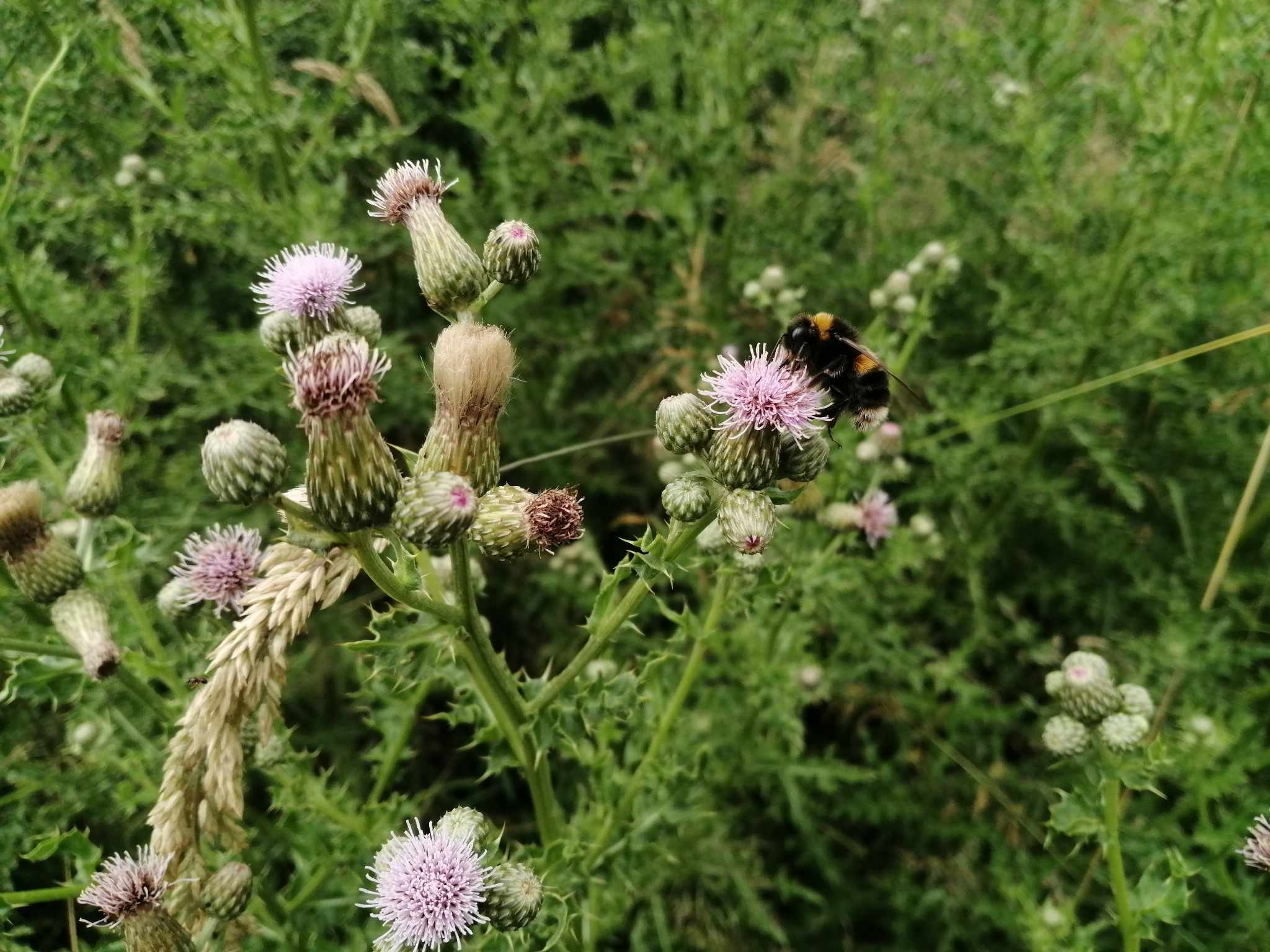Over the weekend, some of our team visited nest boxes as part of our long-term monitoring project, run previously under the Thornham Owl Project.
Jess, who runs our Raptor Hospital, and Susan, our Education Officer, were joined by Dr Hugh Hanmer from the BTO, who holds the necessary licences to enable us to monitor these boxes.
Remote camera image showing the pair of Barn Owls at the box, and a brave rabbit in the grass!
The team opted to revisit boxes in the Waveney Valley, which had been initially checked earlier in the year to assess any maintenance requirements. The first Barn Owl box is located on a private nature reserve, and we met one of the land-managers who gave us access to the field. We set up the ladder against the tree, but just before the net could be placed over the hole to catch any adults, a Barn Owl flew out! Hugh climbed the ladder and discovered 4 eggs inside the box. We quickly retreated to give mum a chance to return to her eggs. According to those who are keeping an eye on the nest using remote cameras, she is ringed and is regularly seen with her mate flying across the fields. We will return to this box in a few weeks time to ring any chicks that hatch.
Four Barn Owl eggs in a well lined box.
The next box to check was a Kestrel box. Upon our arrival, we noticed some fresh looking poo stains on the edge of the box and on the vegetation below. Given the recent rain, this led us to believe that the box was occupied. Once again, Hugh climbed the ladder and at the top proclaimed “Hello, you!” Inside the nest were three young Kestrels, which he quickly bagged up to bring down for ringing. Whilst Jess has ringed a number of Kestrels in the Hospital, these were the first proper in-the-wild ones that she had handled, and only the second brood that Susan had ringed. The young were ringed quickly and efficiently by the team, and we noted that they all had very round tummies - clearly there is plenty of food in this area. While Hugh returned the chicks to the box, Jess spotted a female Kestrel flying over the field, so once again, we quickly retreated.
The next few Barn Owl boxes didn’t have any birds present, although had clearly been used by Jackdaws as they were filled with sticks and twigs.
The last box in this area to check was a Barn Owl box on a field edge. As Hugh climbed the ladder, he heard hissing coming from the box, which resulted in two very excited members of staff on the ground below!
Inside the box were two young Barn Owls. These were ringed and we were able to determine that the larger one was a female, as she already had some spotty feathers growing on her flank. The smaller one we suspect was a male, but couldn’t be sure as it was a bit younger than the other one so the feathers weren’t as developed. After a quick
After a successful morning, the team stopped for some lunch and admired the variety of insect pollinators visiting the wild flowers in the field. They then decided to check an accessible Barn Owl box at Thornham before visiting some boxes local to Stonham.
The Thornham box was active due to the increased level of pellets deposited in it, but there were no signs of any nesting. It is likely that any birds may be using a natural cavity and that this could be used as a roost by the male when he’s not hunting. We will return and check this box later in the summer as Barn Owls can lay a second clutch in a nearby box.
Jess and Hugh positioning the ladder
The team then visited a local farm which has four accessible boxes. Unfortunately two of these required maintenance and were unused, although one was full of fresh leaves, suggesting a squirrel may be thinking of using it. The Little Owl box also contained a squirrel drey, which was evicted, although the box will be relocated over the winter to a more suitable location.
The final box on this farm is located in a large oak tree which is part of the field margin. In previous years, we have used this area as a hack release site, as the field has been sown with cover crop and full of voles! This year, the crop is wheat, and there is less cover for rodents. We were not hopeful, but when Hugh climbed the ladder, he heard movement from within the box. We use a block of wood to cover the hole and prevent any birds from escaping, to ensure that we are able to assess the population accurately by monitoring adults as well as juveniles. While Hugh was trying to safely secure the female from within the box, while up a ladder, she knocked the blocker and escaped! Hugh was able to see that she was unringed though, so not one of the birds we’ve released. With mum out of the way, Hugh found a very small Barn Owlet in the box, which we’ll return to ring in a week or two’s time.
A single Barn Owl chick, too small to ring on this visit.
The last box to check for the day was installed just a few months ago and built by students from Suffolk Rural College. When Hugh put the ladder against the tree, a Stock Dove flew out, and inside the box were two eggs. Whilst Stock Doves are not a species we ordinarily get involved with, if Hugh is down in a couple of weeks time, then we may go and ring these chicks, as it’s all good practice and Stock Doves are an under-recorded species. While we were tidying our things away, we were alerted by a Kestrel to a Buzzard flying over the field , while mummy Stock Dove sat tight in a large Willow about 200m away waiting for us to leave.
It would appear that the Barn Owls in our area seem to be a bit all over the place this breeding season, with some large chicks and some still on eggs. This could be indicative of an early failure and relaying, but we will wait until the end of the season to draw any conclusions. In the meantime, the team will continue to monitor any boxes we have access to over the coming months to build a picture of how Barn Owls, and other Raptor species are doing locally.
Once again, we are grateful to Hugh for giving his time to enable us to relaunch this project, and to all the land owners who give us access to check these boxes. If you have a nest box under the Thornham Owl Project and would like us to monitor it, please get in touch.




